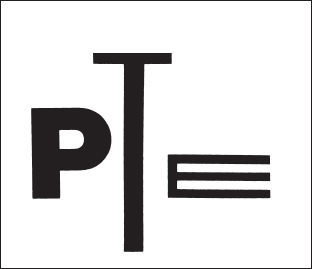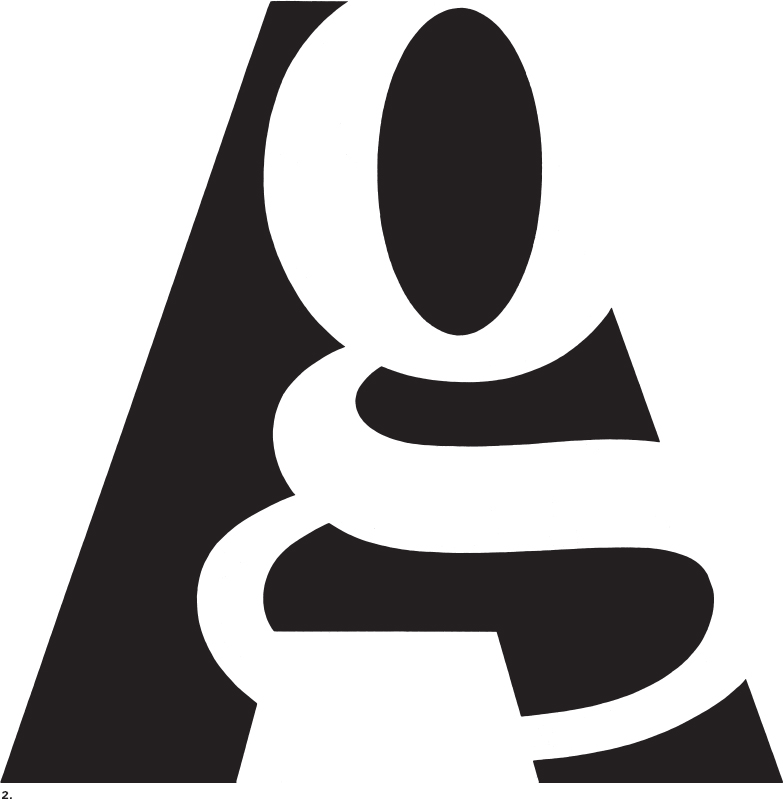3
Syntax and Communication
Like the anatomy of typography, typographic syntax and communication have a language that must be learned to understand typographic design. Syntax is the connecting of typographic signs to form words and sentences on the page. The elements of design – letter, word, line, column, and margin – are made into a cohesive whole through the use of typographic space, visual hierarchy, ABA form, and grid systems.
Typographic syntax
In grammar, syntax is the manner in which words are combined to form phrases or sentences. We define typographic syntax as the process of arranging elements into a cohesive whole. The study of typographic syntax begins with its basic unit, the letter, and progresses to word, line, column, and margin.

1. This composition demonstrates contrasting visual characteristics of three letterforms. (Designer: Robert Boyle)
2. Through precise letterform drawing and carefully considered form-tocounterform interaction, two dissimilar letters form a cohesive sign. (Designer: Gail Collins)

The letter
Our initial discussion of typographic syntax addresses the intrinsic character of the individual letter. This well-drawn form, exhibiting subtlety and precision, is the unit that distinguishes one family of type from another. It exists in various weights, ...
Get Typographic Design: Form and Communication, 5th Edition now with the O’Reilly learning platform.
O’Reilly members experience books, live events, courses curated by job role, and more from O’Reilly and nearly 200 top publishers.

